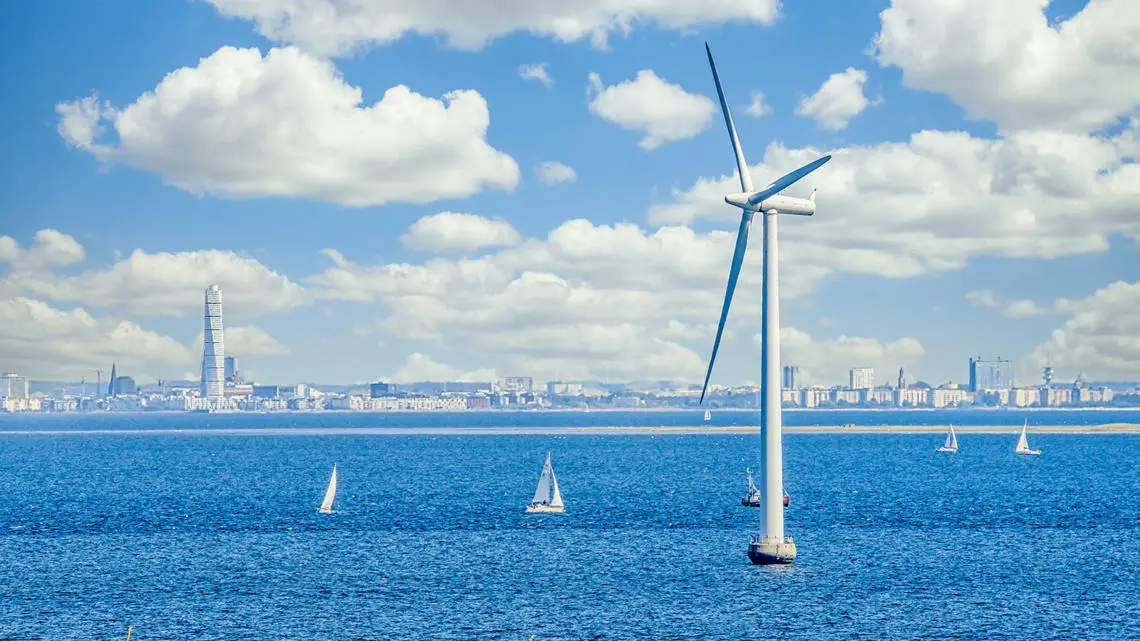Authors
WBCSD Communications
Equinor announces its ambition to become a net-zero energy company by 2050. The ambition includes emissions from production and final consumption of energy. It sets a clear strategic direction and demonstrates Equinor’s continued commitment to long-term value creation in support of the Paris Agreement.
“Equinor is committed to being a leader in the energy transition. It is a sound business strategy to ensure long-term competitiveness during a period of profound changes in the energy systems as society moves towards net zero. Over the coming months, we will update our strategy to continue to create value for our shareholders and to realise this ambition,” says Anders Opedal who today took over the position as Chief Executive Officer (CEO) and President of Equinor.
Earlier this year, Equinor announced its plans to achieve carbon-neutral global operations by 2030 and to reduce absolute greenhouse gas (GHG) emissions in Norway to near zero by 2050. At the same time, Equinor outlined a value-driven strategy for significant growth within renewables, as well as a new net carbon intensity ambition. Continuing to deliver on the short and mid-term ambitions will be key to achieving net-zero emissions.
Equinor has for years demonstrated an ability to deliver on climate ambitions and has a strong track record on lowering emissions from oil and gas. Now, we are ready to further strengthen our climate ambitions, aiming to reach net zero by 2050,” Opedal says.
Equinor expects to deliver an average annual oil and gas production growth of around 3 percent from 2019 to 2026. Equinor is well positioned with world-class global assets in attractive areas with substantial value creation potential. By optimizing its portfolio through financial discipline and prioritization, Equinor will continue to develop competitive and resilient projects whilst maintaining industry-leading recovery rates, unit costs and carbon efficiency. The net-zero ambition will strengthen future competitiveness and value creation at the Norwegian continental shelf (NCS). Equinor’s plans for production, development and exploration at the NCS remain firm.
To develop Equinor as a broad energy company, renewables will be a significant growth area. Equinor has previously set ambitions for profitable growth within renewables and expects a production capacity of 4-6 Gigawatts (GW) by 2026 and 12-16 GW by 2035 (1). Equinor now plans to expand its acquisition of wind acreage, with the aim of accelerating profitable growth and will continue to leverage its leading position in offshore wind. Equinor will establish renewables as a separate reporting segment from first quarter 2021. (1) Equity share.
To achieve net-zero emissions requires a well-functioning market for carbon capture and storage (CCS) and natural sinks, as well as the development of competitive technologies for hydrogen. Building on its capabilities from oil and gas, Equinor is well positioned to provide low-carbon technologies and establish zero-emission value chains. Equinor is driving the development of these technologies through projects such as Northern Lights, which aims to store CO2 from industrial sites across Europe. Equinor also assumes that an increasing share of oil and gas will be used for petrochemicals towards 2050.
“Climate change is a shared challenge. The combined efforts of governments, industries, investors and consumers are crucial to reaching net-zero emissions, for Equinor and for society. Together, we can overcome technological and commercial challenges, cut emissions, and develop CCS and zero-emission value chains for a net-zero future,” says Opedal.
Equinor expects to present an updated strategy at its Capital Markets Day in June 2021.
Equinor’s net-zero ambition covers scope 1 and 2 GHG emissions (operated basis 100%) and scope 3 GHG emissions (use of products, equity share).
Equinor’s climate ambitions
Become net zero by 2050. The ambition includes scope 1, 2 and 3 GHG emissions, where scope 3 emissions represent a calculation of indirect emissions from customers’ use of Equinor’s equity production volumes.
Reduce emissions from oil and gas. Maintain industry leading carbon efficiency by (i) aiming to reach upstream <8 kg CO2 per boe by 2025, (ii) achieving carbon neutral global operations by 2030, (iii) reducing absolute greenhouse gas emissions from operated offshore fields and onshore plants in Norway towards near zero by 2050 without offsets, and (iv) ensuring no routine flaring and near zero methane emissions intensity by 2030.
Grow in renewable energy. Expecting a production capacity of 4-6 GW by 2026 and 12-16 GW by 2035, Equinor equity.
Reduce net carbon intensity to zero by 2050.
Boundaries and assumptions
- Our net-zero ambition covers scope 1 and 2 GHG emissions on an operational control basis (100%) and scope 3 GHG emissions (use of products, category 11, on an equity share basis).
- Success will depend on society moving towards net zero in 2050.
- We assume a well-functioning market for carbon capture and storage and natural sinks, and that these mechanisms can be accounted for as negative scope 3 emissions.
- We assume development of a hydrogen market.
- We assume that that an increasing share of oil and gas will be used for petrochemicals towards 2050.
See methodology note on Equinor.com/climate.
Anders Opedal taking over as president and CEO of Equinor from 2 November 2020
Outline
